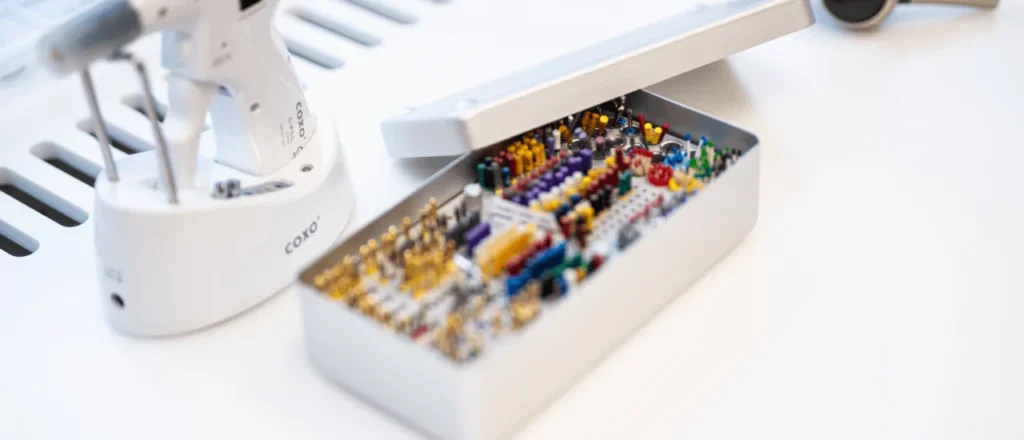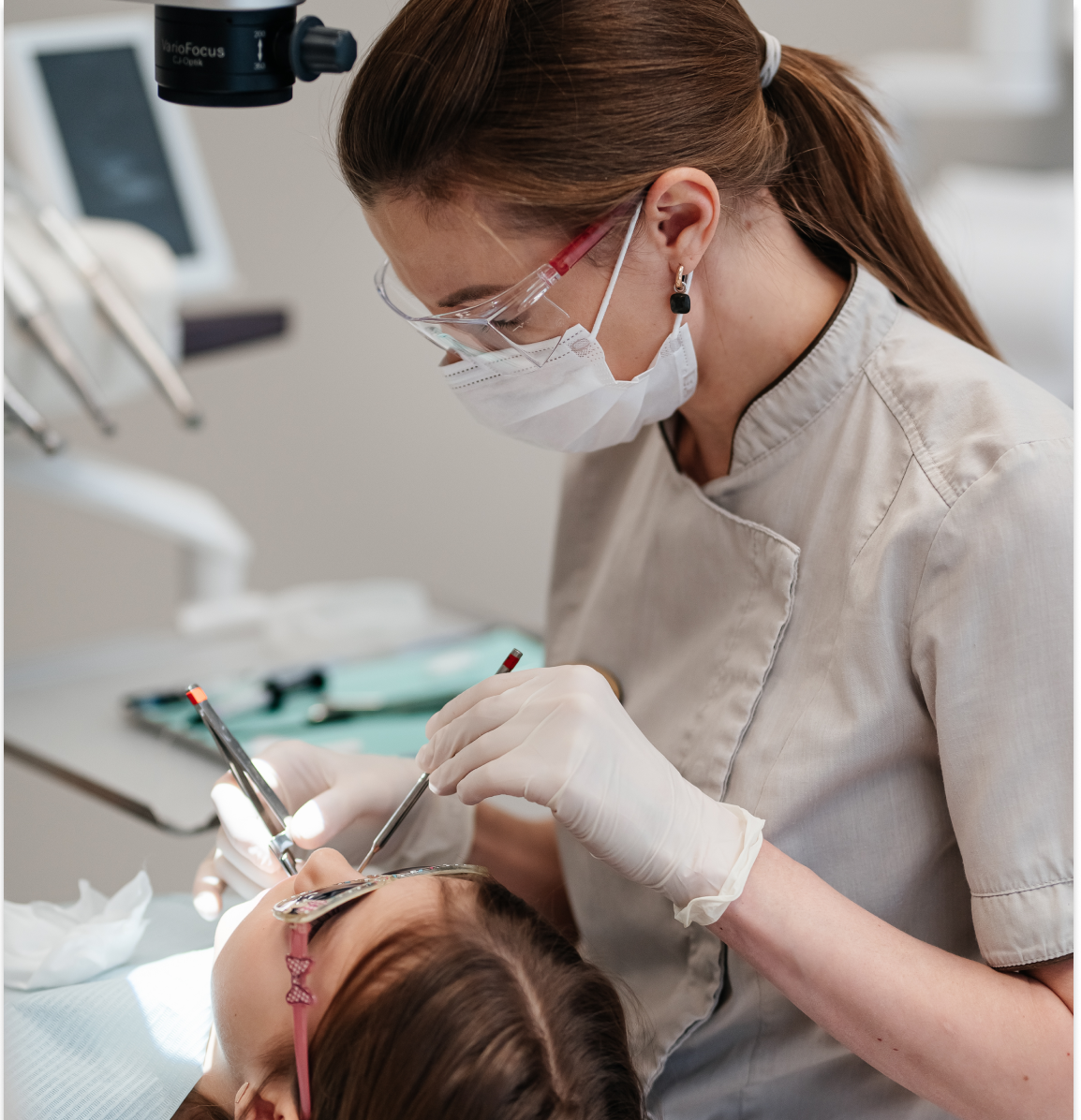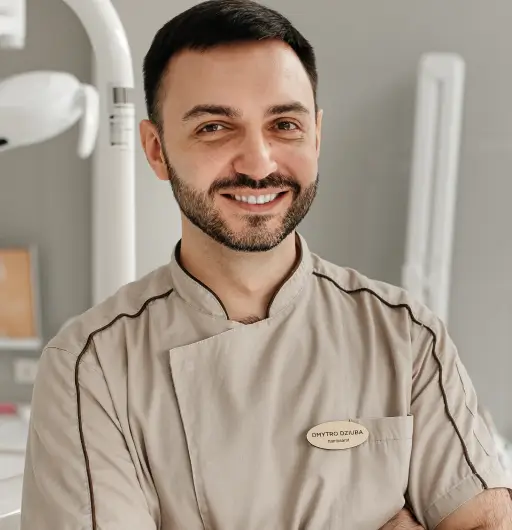Tooth extraction, including complex cases
Tooth extraction is one of the most common operations in dental surgery. Despite the fact that dentists always try to preserve the patient’s native tooth, in some cases extraction becomes necessary. Highly qualified doctors and modern methods of anesthesia make the procedure fast and painless, even in complicated cases.
Indications for tooth extraction
Before recommending a tooth extraction, the doctor performs a thorough diagnostic evaluation. This may include a visual inspection, x-rays, CT scans, or panoramic jaw scans to assess the condition of the teeth.

Indications for removal may include:
- severe tooth decay;
- root fracture;
- deep caries;
- severe loosening of the tooth;
- complicated pulpitis or periodontitis;
- a cyst or granuloma on the root of the tooth that cannot be removed;
- abnormal positioning of teeth, etc.
Wisdom teeth removal is often recommended for abnormal placement, where they put pressure on neighboring teeth and cause a crooked tooth row.
Preparing for tooth extraction
Tooth extraction can be planned or emergency. In emergency cases involving acute pain, the procedure can be performed without prior preparation. However, it is important to inform the doctor about chronic diseases and allergies to medications.
In preparation for scheduled removal, it is recommended:
- avoid heavy physical activity and heat before surgery;
- avoid alcohol intake a few days before the procedure, as it may affect blood clotting;
- refrain from smoking;
- eat breakfast before the procedure to avoid hunger.
The dentist may also prescribe tests and an anesthesiologist consultation, as well as antibacterial or anti-inflammatory medications the day before the extraction.
The process of tooth extraction
Tooth extraction can be performed using a variety of methods:
- If the tooth is visible, it can be removed with forceps. After anesthesia, the dentist removes the tooth and treats the hole.
- In some cases, the tooth can be removed without forceps when the dentist loosens the alveolar ligament with a special instrument called a periotome.
- Complex extractions, such as the removal of unerupted or misaligned teeth, require surgical intervention. In such cases, after anesthesia, the dentist cuts the gum, removes the tooth and sutures the wound.
If it is necessary to remove several teeth or perform a complex manipulation, the procedure is recommended to be performed under sedation.
Recommendations after a tooth extraction
Pain, swelling and slight fever may persist for 3-4 days after tooth extraction. The average postoperative period is 6-10 days.
After a tooth extraction, it is recommended:
- hold a cotton swab to stop bleeding for 20-40 minutes;
- apply a cold compress to the cheek to reduce swelling;
- refrain from eating and drinking for 2-3 hours after surgery, avoiding mouthwash and the use of straws;
- avoid hot, hard and spicy foods for 3-4 days;
- do not chew food on the side of the extracted tooth until the tooth is completely healed;
- avoid smoking and alcohol;
- do not brush your teeth for the first 12 hours after extraction;
- avoid intense physical activity and hot procedures for 3-4 days;
- sleep on the side opposite the extracted tooth if there is swelling and pain.
If you experience severe bleeding, throbbing pain, fever, swelling of the cheek, or other alarming symptoms, you should see a dentist.
Reducing pain after tooth extraction
Pain may occur after the anesthesia has worn off. To reduce pain and prevent swelling, it is recommended to apply cold compresses during the first 24 hours. You can also use painkillers, but you should check with your dentist about their prescription.
Contraindications to tooth extraction
Tooth extraction is a surgical procedure that requires evaluation of the patient’s health status and exclusion of contraindications.
Tooth extraction is not recommended when:
- acute diseases (infection, inflammation);
- blood clotting disorders;
- exacerbation of chronic diseases;
- some endocrine and neurological diseases;
- in the first and last months of pregnancy.
In such cases, it is better to postpone surgery until the patient’s condition stabilizes.
Prosthetics for lost teeth
A tooth can be placed in place of an extracted tooth:
- Implant with crown: the optimal method of replacing a lost tooth, which involves implanting an artificial root into the jawbone, on which a crown is then placed. Implantation can be a one-stage or two-stage procedure.
- Bridges: A structure that can replace 1 to 3 teeth, attached to healthy teeth on the sides of the lost teeth.
- Removable Denture: recommended when a significant number of teeth are lost or when an implant or bridge cannot be placed.
These techniques ensure that the functionality and aesthetics of the dentition are restored after an extraction.
Book an appointment
for a consultation

Treatment
advantages
Equipment and technology
Computed tomography for diagnosis and treatment under magnification can solve all problems
Highly qualified specialists
Doctors of the clinic are trained by leading dentists of the world, they are able to work with the most complicated cases
Sedation
A painless and comfortable treatment without stress and anxiety.

Our doctors
We work exclusively on the principles of evidence-based medicine and use protocols that have been repeatedly validated in scientific studies.

Book an appointment online







